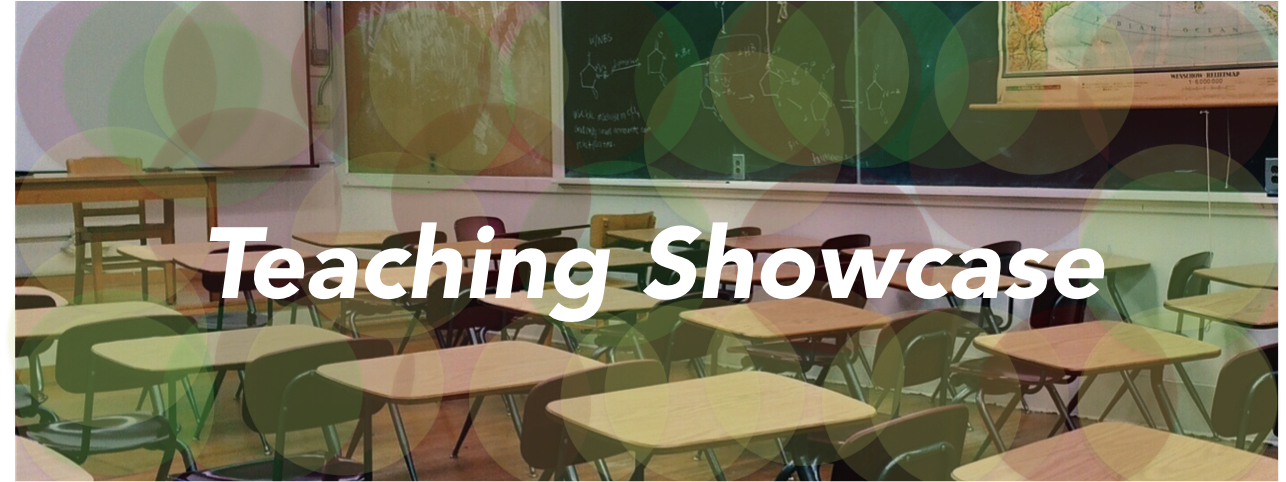
We are introducing a new feature to the ECE English website. Each semester we will feature an ECE English teacher’s writing assignment or in class activity as a way to showcase and celebrate the excellent work our teachers and students are doing in ECE. Do you have an assignment or activity you’d like to share? Please email ECE English at eceenglish@uconn.edu.
On a rainy Friday afternoon, I sat down with Susan Laurencot in her classroom at Montville High School. Laurencot has been a certified ECE teacher since 2015. I asked her what originally drew her to the ECE program.
“[ECE English] has freed me up to be more creative with my kids, and it has allowed me to make a case against formulaic writing.”
Laurencot participated in the Connecticut Writing Project (CWP) Summer Institute when she was first certified as an ECE teacher. During the CWP Summer Institute, she researched writing without a formula, and says this was a primary inspiration for the development of her ECE English course.
Currently, her course is interdisciplinary with ECE History. Titled “What Haunts Us,” the class explores the lingering consequences of major historical American events.
One writing assignment she shared with me asks students to consider one of those lingering consequences, what Laurencot calls a “critical issue,” from the expansion of the American West. This is a multimodal assignment, and student work gets posted to Laurencot’s blog Raise Your Voice. Students also write a reflective piece in which they explain and defend their design and composition choices.
Laurencot explained that she wants students to be intentional when it comes to multimodal writing: “Don’t just add a photo because this is a ‘multi-modal’ project. Why did you add it? How does it enhance the reader’s understanding of your topic?”
She resists providing prompting questions in order to encourage students to move away from formulaic writing. Instead, Laurencot wants them to be motivated by their ideas, and more importantly their audience.
Typically, a student’s audience is their teacher. With a multimodal assignment like Laurencot’s, the audience is extended beyond the classroom with the use of hashtags. Each student has to research hashtags that define or target the audience they’re interested in reaching. For example, one student blog post titled “Feminism: How Centuries of Negative Connotation Continue to Haunt America” uses the hashtags #WomensReality, #EverydaySexism, and #IAmANastyWoman.
Another student wanted to challenge herself by giving a presentation in the style of a live TedTalk. The student’s critical issue was sexual assault against women, particularly native women as the class had read Tracks by Louise Erdrich. For her presentation, the student set a timer on the large smart board in the classroom without explaining why. During the presentation, the timer would go off and the student would reset it, again and again. At the end of the presentation, she asked the class if they noticed how many times the timer went off. According to the student, every time the timer went off another woman was sexually assaulted in this country. It was a powerful performance, and an example of how multimodal encompasses the gestural, as well as the digital and analog.
I asked Laurencot if students immediately embraced this kind of assignment, or if they were hesitant about moving away from the traditional essay.
She laughed and said, “They’ve heard rumours, ‘Laurencot does not like formulaic writing!’ So they’re a little bit unnerved. Kids are like, I can’t write like that.” Laurencot acknowledges that it’s challenging for some students to leave the formula behind, but also incredibly rewarding for student and teacher alike.
One change Laurencot would make to this assignment in the future is to encourage students to compose multimodally for all of their writing assignments. This year, students tended to see multimodal as a discrete assignment, instead of as a way to approach composition in general.
Click here to see the full assignment prompt and learning scale Laurencot uses in her ECE class.